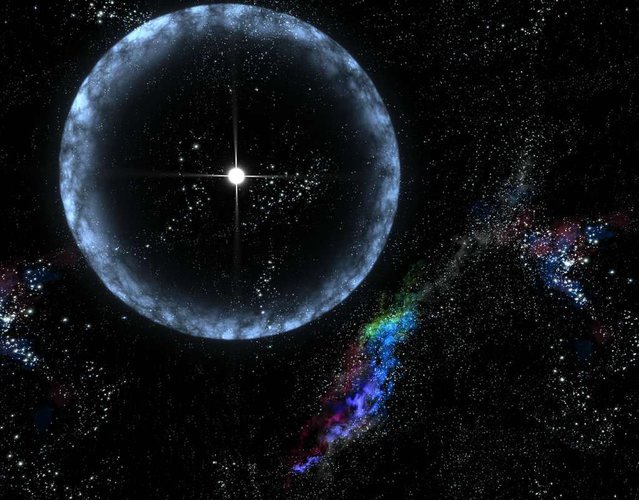New research revealed at the National Astronomy Meeting has shown that the mountains on neutron stars may not be very mountainous at all, only being a fraction of a millimeter in size due to their tremendous gravitational pull.
Background: What are Neutron Stars?
Neutron stars are one of the most extreme objects one can find in space. They are the product of a supergiant star that has already died and gone supernova, with the core being the single remaining piece left. This core is incredibly dense and composed entirely of neutrons. The gravity is so strong that it forces the protons and electrons inside together. They are also tiny, relatively speaking, having a diameter of only around 20 kilometers. Several of them could fit inside the United States. However, their extreme density, strong gravitational pull, and a magnetic field one trillion times stronger than Earth’s would make this a horrible idea. Neutron stars are some of the fastest rotating objects in the universe as well, spinning thousands of times per minute. Current estimates suggest that there are around one billion neutron stars out of the Milky Way’s hundreds of billions of stars, making them more of a rarity.
Analysis: What is this? A Mountain for Tardigrades?
Neutron stars are incredibly dense and possess powerful gravitational pulls, which may be the reason why their physical features and potential landmarks are now believed to be only fractions of millimeters high. Previous working theories suggested that mountains on the stars could grow up to a few inches in height, which has now been proven not to be possible. The research was performed by students and staff at the University of Southampton, who created computer models of realistic neutron stars and subjected them to different mathematical variables. Fabian Gittins, a Southampton Ph.D. student who led the research, wanted to help the community at large understand the upper limits of these minuscule mountains- after which they would break because gravity and the star’s crust could not support them. Understanding the topography of neutron stars is essential because of their breakneck rotation speed, which scientists believe could produce gravitational waves from the irregularities in its land. Gittins thinks that the extremely small size of the mountains will pose a further challenge towards efforts to detect gravitational waves emanating from neutron stars, as none have been found yet today. However, as technology continues to advance and gravitational wave detectors, such as the Laser Interferometer Gravitational-Wave Observatory (LIGO) who first discovered the waves’ existence in 2015, it is likely that analysis of these objects will become more efficient.
Outlook: From Science Fiction to Science Fact
Until 2015, the existence of gravitational waves wasn’t certain- they were another byproduct of the universe produced by Einstein’s theory of relativity. And then scientists found them after two massive black holes collided with one another and sent space-time into a frenzy. What was first thought of as potential science fiction material and then as a product of an extremely rare cataclysmic space event is now being detected by scientists nearly every single week.
As detectors such as LIGO continue to get more precise, neutron stars will likely be a major way of detecting gravitational waves frequently and accurately. The total base of knowledge on neutron stars sees a bright future as well. Improvements made to simulations like Gittins’ will no doubt further the understanding of one of the universe’s most extreme and relatively rarer objects. Just for everyone’s safety, keep them as far away from Earth as possible.
Liam Stewart is a junior at NYU studying Journalism and Political Science. He is currently covering Science, Space, and Technology at The Debrief.
Don’t forget to follow us on Twitter, Facebook, and Instagram, to weigh in and share your thoughts. You can also get all the latest news and exciting feature content from The Debrief on Flipboard, and Pinterest. And subscribe to The Debrief YouTube Channel to check out all of The Debrief’s exciting original shows: DEBRIEFED: Digging Deeper with Cristina Gomez –Rebelliously Curious with Chrissy Newton

